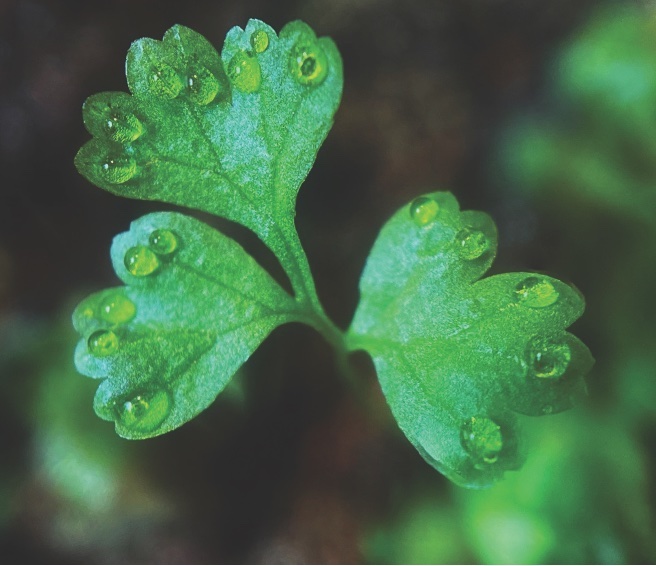Have you ever gone outside on an early spring morning and spied “dew” on the grass? And then on closer inspection, you wondered why the droplets only appear on the tips of the blades? Or perhaps you noticed that some plants had water droplets along the margin of the leaves? That’s not dew, it is guttation.
Guttation is actually a mixture of xylem and phloem fluid, which contains sugars and other chemicals produced in the leaves that are exuded by the plant overnight. Unlike dew, which is pure water, guttation is rich in the organic and inorganic dissolved substances that are the lifeblood of the plant. Whereas guttation comes from the plant, dew comes from the atmosphere. You are lucky you got up early that day and were rewarded with this unusual sight, because it soon will evaporate.
Sign up today!

What causes guttation? In biology 101, we were taught that when water evaporates from a plant’s leaves it causes fluid to move through the plant, a process called transpiration, but the story is much more complex.
First, a wee refresher: A plantleaf has microscopic holes in its surface, called stomata, that allow in carbon dioxide. A plant combines that CO2 with water by means of photosynthesis, using chlorophyll (perhaps the most important single chemical in the universe). The end product of photosynthesis, oxygen, then escapes through the stoma (lucky us).
A side effect to open stomata is water loss—so much so that 97 to 99 percent of the water brought up through the xylem is lost via transpiration. Each molecule of water lost in the leaf through the stomata is replaced by another adjacent water molecule, which, by capillary action and surface tension, tugs on another molecule, and this goes on down the line through the xylem to the roots. We generally think that water enters the roots passively only because of the pull of this transpiration process, but there is another, less well-known, process also going on: guttation.

These are a plant’s internal fluids that are exuded at night under certain conditions. (David Nelson)
The sap within the roots contains dissolved sugars and potassium and other organic and inorganic compounds. The soil in contact with the roots is less rich in such solutes, so water tends to passively enter the roots through osmosis to equalize the concentrations of the compounds in and outside the root. The pressure moving the water into the root is called the root pressure. The root pressure is so much weaker than the transpiration pressure that the latter overshadows the former during the daytime.
However, at night, photosynthesis shuts down and the stomata are closed, conserving water. If the soil is moist, the root pressure will increase the pressure in the xylem, forcing the leaf to offload some of the fluid. You could think of it as an emergency escape route. When the plant needs to release fluid, and the stoma are closed, the fluid finds another way out. It exits through specialized pores called hydathodes; they are located at the tip of the blade of grass or at the margin of a leaf, typically at the tip of a marginal tooth or serration. If the humidity is high, the guttation does not rapidly evaporate, but accumulates at the leaf tip.
So go exploring in the early morning and see what you can find. Then you can tell your friends that you were engaged in guttation with the plants! That should roll some eyes at the local coffee shop.


